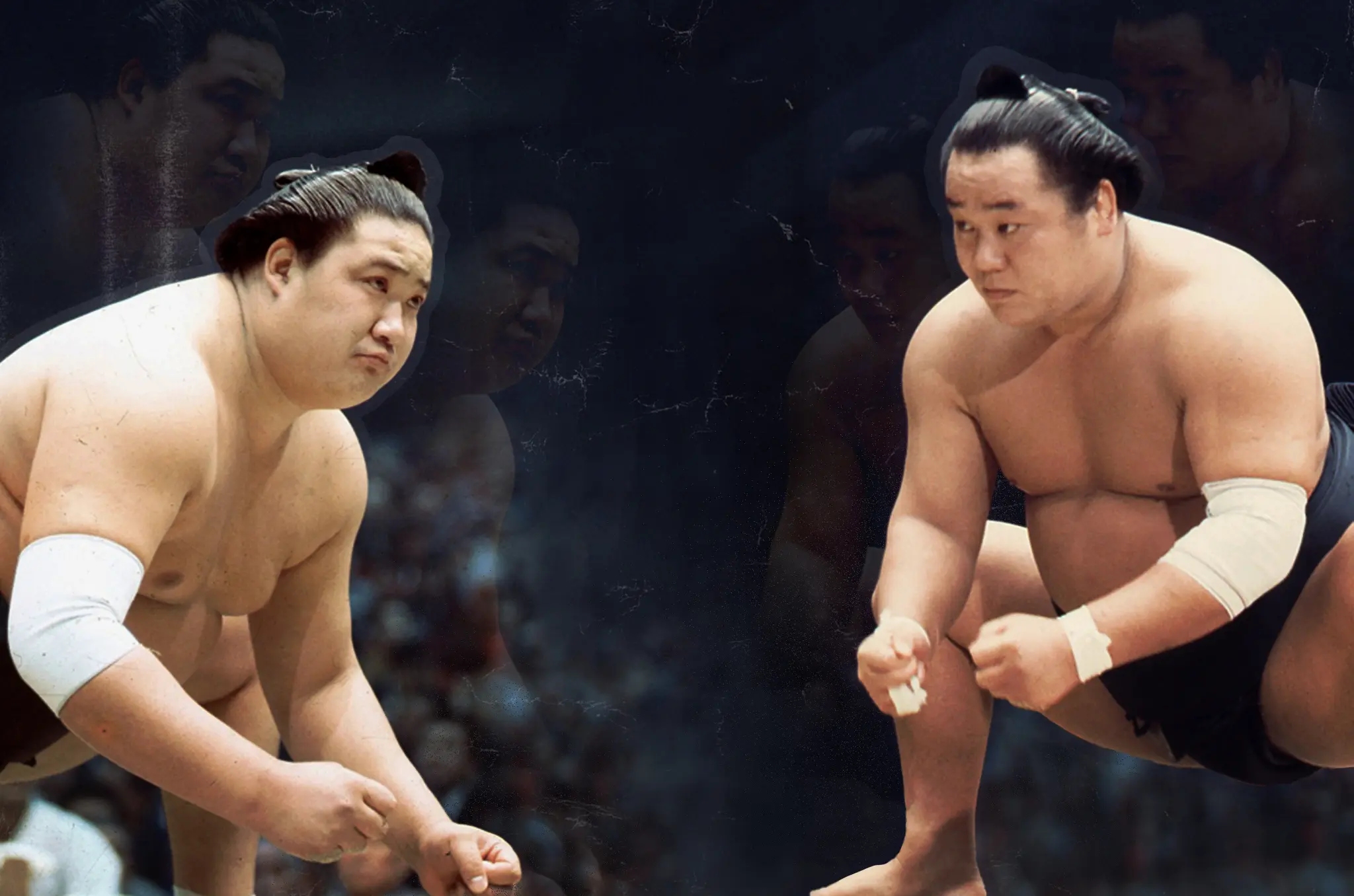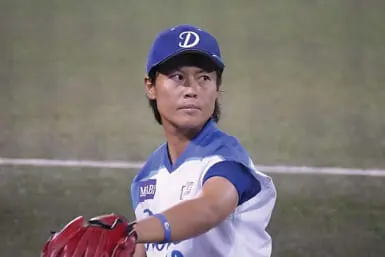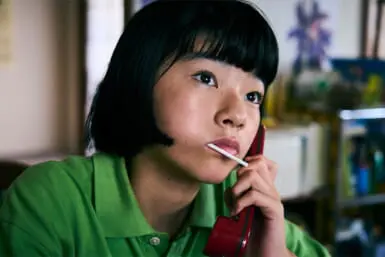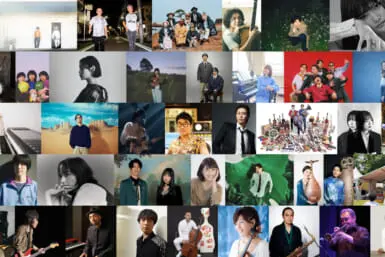With the Kyushu Basho set to begin on Sunday, we thought we’d take a look at some of the greatest sumo rivalries for our latest List of 7.
Wakanohana vs. Tochinishiki
In the late 1950s, it was the rivalry between Wakanohana and Tochinishiki that stood out the most. The two wrestlers were relatively small in stature compared to other yokozuna of the era, yet managed to win an impressive 10 top-division titles each. Their final bout was on senshuraku — the last day of a sumo tournament — at the 1960 March Basho. They both went into the match with 14-0 records. It was the first time in the history of the sport that two yokozuna met on the final day undefeated. The excitement was palpable.
“The night before senshuraku, I decided to go and see a movie to calm myself,” said Wakanohana. “After my eyes got used to being inside the darkened theater, I noticed a rikishi sitting in front of me. I rubbed my eyes to see well. It was Tochinishiki-zeki. I thought that Tochinishiki-zeki had also had to get away from all the tensions and pressures at his heya.” The following day, Wakanohana overpowered his older opponent in Osaka to win what was then his eighth title. Two months later, Tochinishiki announced his retirement on day three of the Tokyo Basho, putting an end to the Tochi-Waka era. Wakanohana picked up two more titles before retiring in 1962.
Taiho vs. Kashiwado
After Tochi-Waka came the Haku-Ho era. This was the name given to the Taiho-Kashiwado years based on one reading of the kanji used in their names. The two men were promoted to yokozuna at the same time in 1961. In truth, though, this is one of the more lopsided of the rivalries on the list, as Taiho was the clear dominant force in sumo in the 1960s. Between 1960 and 1971, he won 32 tournament championships, a record that was eventually overtaken by Hakuho in 2015. Loved by adults and children, Taiho was widely considered the greatest sumo of the 20th century.
Kashiwado was unfortunate to be around in the same era, though he still managed to win a very respectable five tournament championships and finished runner-up 15 times. He might have won more had it not been for his injuries, which earned him the nickname the “Glass Yokozuna.” Between 1963 and 1965, he was forced to sit out six tournaments. His most impressive triumph came at the Tokyo Basho in September 1963, when he finished with a perfect 15-0 record. Kashiwado won 16 matches against Taiho, losing 23. He retired in 1969. Taiho bowed out two years later.
Tamanoumi vs. Kitanofuji
As with Taiho and Kashiwado, Tamanoumi and Kitanofuji were promoted to yokozuna simultaneously. They achieved that feat in January 1970. Great friends away from the dojo, they were fierce competitors on it. Sadly, their rivalry was cut short as Tamanoumi died suddenly on October 11, 1971, aged just 27. He had needed an appendectomy earlier that summer, but put it off due to his duties as a yokozuna. His final championship victory came at the Nagoya Basho in July of that year. It was the only time he finished with a 15-0 perfect record.
Two months later, he fought at the Tokyo Basho and finished with an impressive 12-3 record despite being on painkillers. That title was won by Kitanofuji. He and Tamanoumi triumphed in all but one of the six championships in 1971. The rivalry was just heating up. It was a real tragedy that fans never got to see more of their contests. Tamanoumi’s death hit Kitanofuji hard, and he went into a slump in the first half of 1972. He eventually recovered, finishing his career with 10 top-division titles before retiring in 1974. Tamanoumi won six.
Kitanoumi vs. Wajima
Around the time of Kitanofuji’s retirement, a new sumo star was emerging. Kitanoumi won his first top-division title in January 1974 at the age of just 21. He was promoted to yokozuna six months later, becoming the youngest ever to achieve the top rank in the sport. The dominant figure in the 1970s, he won 17 championships between 1974 and 1979, before adding another seven in the early 1980s. Known for his stern demeanor, Kitanoumi wasn’t particularly popular with fans and his defeat to underdog Takanohana in two playoffs in 1975 led to wild celebrations.
It was Takanohana’s good friend, Wajima, however, who proved to be Kitanoumi’s biggest rival in the 70s, winning 23 of their 44 bouts. He picked up 14 championships before retiring in 1981. At the time, only Taiho and Kitanoumi had more. He currently ranks number seven on the all-time list. Seen as a charismatic figure, particularly compared to Kitanoumi, Wajima was — and remains — the only wrestler with a collegiate background to become a yokozuna. He later became an oyakata (coach), but was forced to quit after it was revealed he was heavily in debt. He subsequently turned to pro wrestling before becoming an X-League American football coach.
Chiyonofuji vs. Konishiki
With Wajima bowing out, Kitanoumi had a new adversary to worry about. At 127 kilograms, Chiyonofuji was small compared to other sumo wrestlers, but he was seen as the emerging talent in the sport in the early 80s. And the man nicknamed “The Wolf” lived up to that reputation by defeating Kitanoumi in a playoff at the Tokyo Basho in January 1981, in a match that was watched by huge numbers. Six months later, he beat Kitanoumi again and, as a result, became the 58th yokozuna. This was despite being 40 kilograms lighter than his opponent.
While Kitanoumi was big, Konishiki was on another level altogether. With a peak weight of 287 kilograms, the Hawaii-born man was, at the time, the heaviest sumo wrestler in history. He used this massive weight advantage to defeat Chiyonofuji in their first-ever bout in 1984. Chiyonofuji thought he’d win easily and was shocked by the power of Konishiki’s thrusts. He subsequently started visiting his stable to learn from him. Their matches always attracted huge interest. Konishiki won three titles and was the first non-Japanese-born wrestler to reach ozeki, but was never promoted to yokozuna. Chiyonofuji finished his career with 31 championships.
Akebono vs. Takanohana
In May 1991, Chiyonofuji retired from sumo two days after losing to 18-year-old Takanahada, who later changed his name to Takanohana. It was a record-breaking match as the teenager became the youngest ever wrestler to defeat a yokozuna. Eight months later, he became the youngest top-division title winner and, in January 1993, was promoted to the rank of ozeki. That same month, Hawaiian wrestler Akebono — three years Takanohana’s senior — became the first non-Japanese-born competitor to reach yokozuna. In the years that followed, the rivalry between the pair defined what was a golden era in sumo wrestling.
Huge numbers tuned in to watch their bouts. The two men, who had massive respect for each other, fought 50 times during their careers, winning 25 apiece. Takanohana, often called the “Prince of Sumo,” was able to overcome opponents with finesse, whereas with Akebono, it was all about power. “We won fast or we lost fast,” he once said about himself and fellow Hawaiian wrestlers. “We weren’t too technical.” The man who arrived in Japan as Chad Rowan in 1988 won 11 championships. Takanohana, whose brother Wakanohana was also promoted to yokozuna in 1998, won 22.
Asashoryu vs. Hakuho
Between 2002 and 2021, Asashoryu and Hakuho won 70 top-division titles between them. That’s an astonishing 61% of the total number of championships during that period. The rivalry between the two Mongolians had the potential to be the greatest ever, but it was cut short in 2010 when Asashoryu retired following allegations that he assaulted a man outside a Tokyo nightclub. Hakuho went on to become the most dominant force in sumo history, breaking various records that are likely to stand for a long time. This includes most career championships (45), most career wins (1,187) and most top-division wins (1,093).
The two men fought 29 times, with Asashoryu coming out just ahead with 15 victories. They may have been compatriots, but in terms of style, they were worlds apart. “Hakuho is an almost serene technician with a larger frame who can win every way imaginable, whereas Asashoryu was the human embodiment of ‘Looney Tunes’ mainstay Taz — a compact bundle of power speed and rage tearing his way through whatever stood in his path,” wrote sumo expert John Gunning in 2019. For fans, Asashoryu was considered the more exciting of the two, but it is Hakuho who goes down as the greatest sumo of all time.









